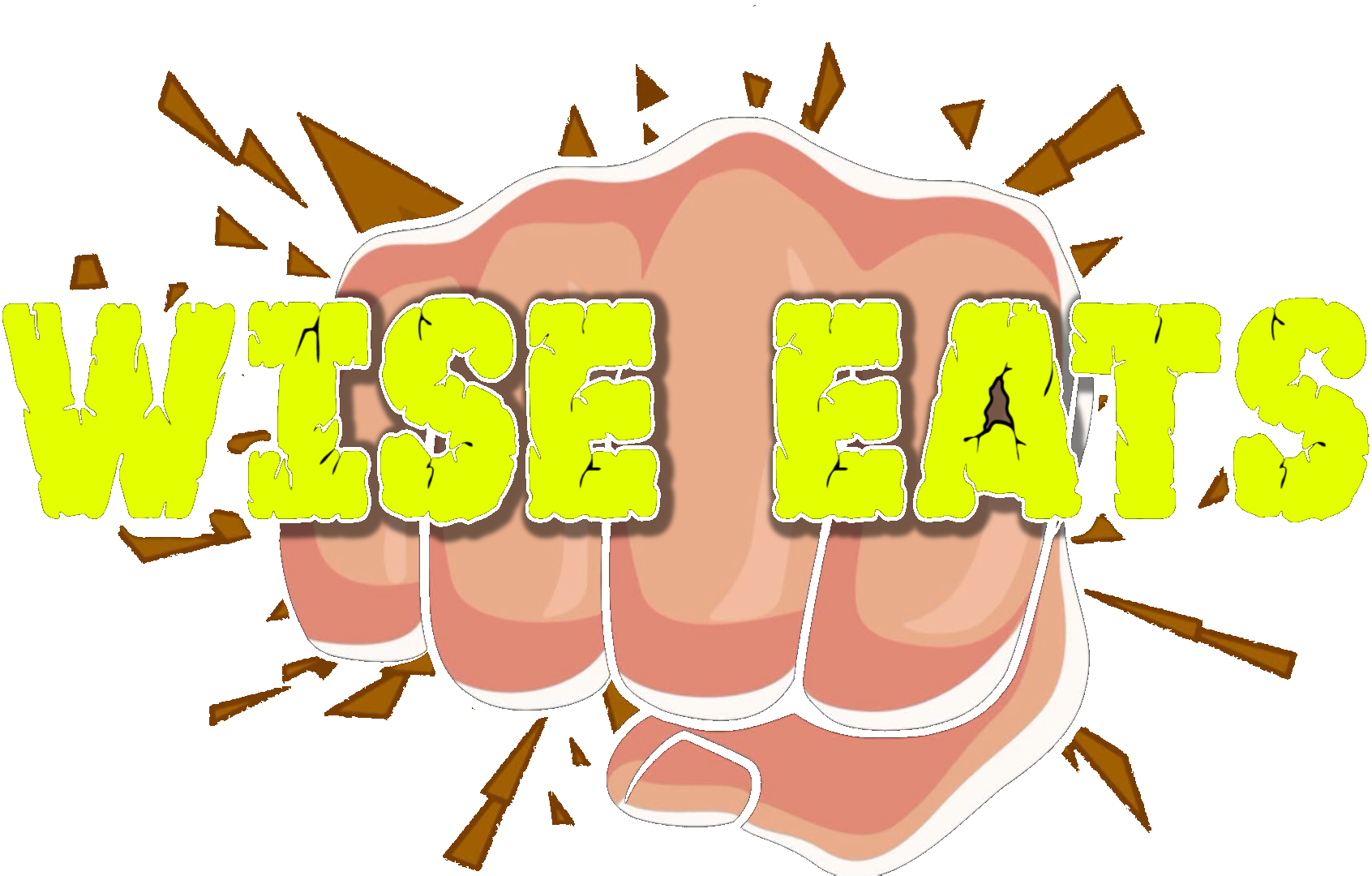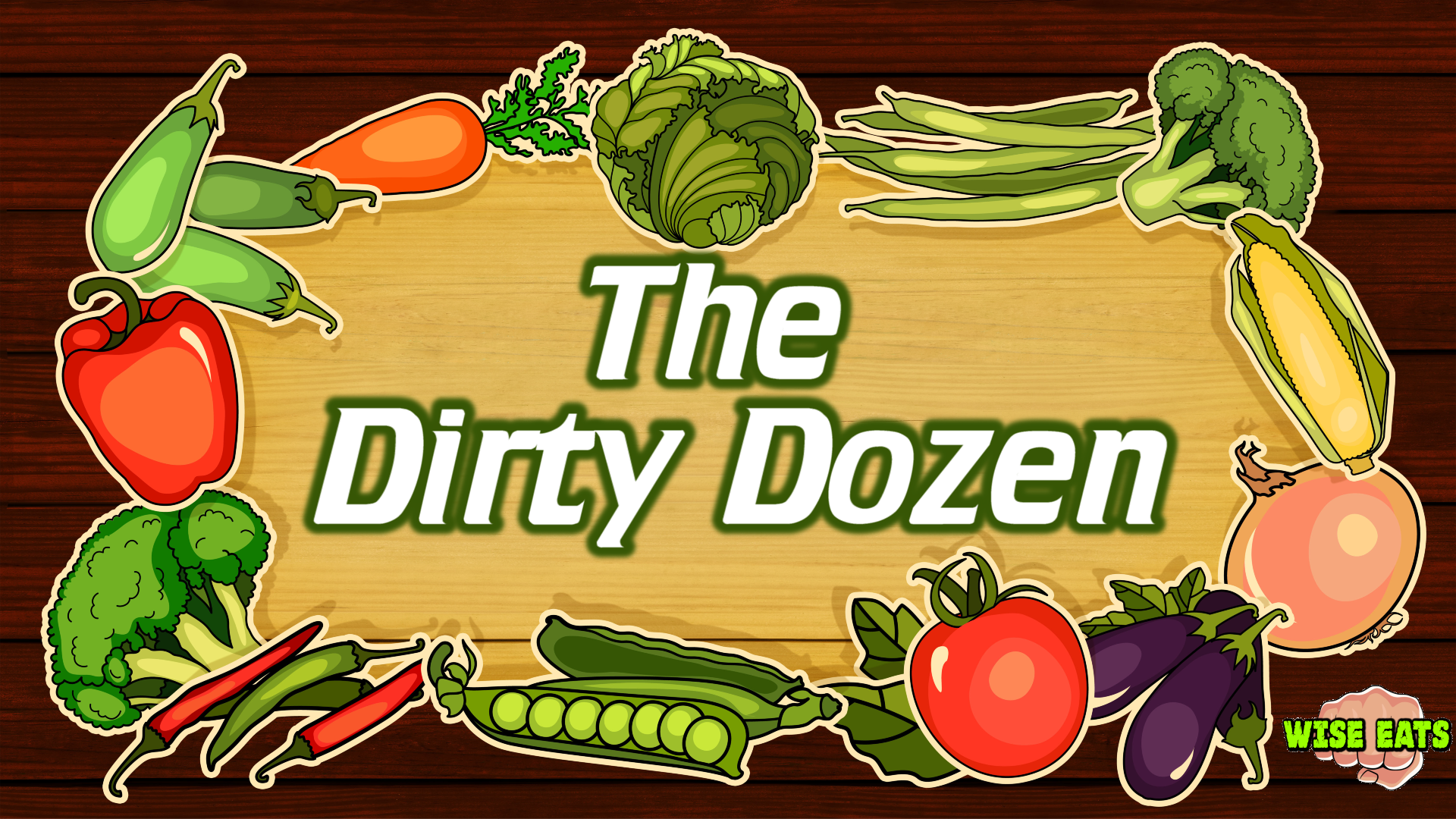Have you heard of the dirty dozen but aren’t sure what it is, what’s on the list, or if it even matters? Then this article is for you!
I was the same way. I had casually heard that were was a “dirty dozen” list and that avoiding certain fruits and vegetables was important for pesticide contamination. But I never looked at the list or did any research for myself, until now! So, how important is it to avoid the dirty dozen? I’m going to share the list, tell you why they’re bad, why they might not be so bad, and offer some suggestions. It’s time to wise up!
Key Takeaway: Eat More Fruits & Vegetables
Before we get started, the moral of the story is this: Eating more produce in general, whether organic or not, is what’s most important. Fruits and vegetables are loaded with vitamins, minerals, antioxidants, and other amazing compounds that give us life, energy, and vitality. I learned this the hard way.
From Junk Food Junkie to Produce Addict
I spent my entire life being nutrient-deficient, consuming nothing but processed garbage, sugar, and junk food. It wasn’t until my mid-late twenties that I started having fruits and vegetables on a regular basis. I remember hanging out at a friend’s house and seeing him cook a stir fry for dinner that was loaded with chicken and vegetables. My mind was blown – I was like bro what are you DOING?? Cooking vegetables for yourself? Inconceivable! The process of making and preparing my own food was so foreign to me. That moment opened my eyes and inspired me to change my ways. From there, it was a slow process incorporating vegetables into my diet consistently, but now they’re a part of daily life. Salads, smoothies, stir fries make up about 75% of my daily intake of food, and I try to have vegetables at nearly every meal.
How Could Eating Produce Be Bad?
So, we all know we should be eating more produce, but one problem with that is nearly 70% of fresh produce sold in the U.S. contains residues of potentially harmful pesticides, herbicides, fungicides, and even poisonous gases used in farming (Dirty dozen, 2020). These chemicals are designed to kill organisms that negatively impact crop production, so imagine what they’re doing to our bodies! Pesticide consumption in humans has been linked to cancer, Alzheimer’s Disease, birth defects, and other immune system disruptions (Aktar, Sengupta & Chowdhury, 2009).
What is the “Dirty Dozen”?
Each year, the Environmental Working Group releases a list of the “dirtiest” and “cleanest” fruits and vegetables, based on the levels of contamination from pesticides and herbicides sprayed during farming.
Pesticide contamination is analyzed on 47 popular fruits and vegetables based on more than 43,700 samples taken by the USDA and FDA. Rankings are based not only on the percentage of samples with pesticides but also on the number of pesticides found on samples. Samples are peeled and/or rinsed before testing to provide a good indication of consumer’s exposure levels. It should be noted that the USDA does not test for all pesticides used in crop production, most notably glyphosate, the most heavily used pesticide in the U.S. (Dirty dozen, 2020).
With that in mind, let’s go over the dirty dozen and clean 15 lists. Below is the 2021 ranking, in order from most contaminated to least contaminated.
- Raisins
- Raisins are not considered produce, but if they were, they would be #1 on the dirty dozen. Out of 670 conventional raisin samples analyzed, 99% tested positive for at least two pesticides, with the average per sample being 13 pesticides (Galligan, 2020). We always buy organic and get ours from Costco.
- Strawberries
- Spinach
- Kale
- Nectarines
- Apples
- Apples are one of the crops that are sometimes genetically modified in U.S. markets. Get organic for sure (Dirty dozen, 2020).
- Grapes
- Cherries
- Peaches
- Pears
- Bell & Hot Peppers
- Celery
- Tomatoes
- Potatoes
- Cherry Tomatoes
- Lettuce
- Blueberries
- Cucumbers
- Plums
- Green Beans
- Tangerines
- Grapefruit
- Raspberries
- Snap Peas
- Oranges
- Carrots
- Winter Squashes
- Summer Squashes
- Bananas
- Sweet Potatoes
- Watermelon
- Mangoes
- Cantaloupe
- Honeydew Melon
- Mushrooms
- Cauliflower
- Kiwi
- Cabbage
- Broccoli
- Asparagus
- Eggplant
- Sweet Peas Frozen
- Papaya
- Onions
- Pineapple
- Sweet Corn
- Avocados
Clean 15
- Avocados
- Sweet Corn
- Sweet corn is one of the crops that is sometimes genetically modified in U.S. markets. I would still buy organic whenever possible (Dirty dozen, 2020).
- Pineapple
- Onions
- Papaya
- Papaya is one of the crops that is predominantly genetically modified in U.S. markets. Get non-GMO or organic, if possible (Dirty dozen, 2020).
- Sweet peas (Frozen)
- Eggplants
- Asparagus
- Broccoli
- Cabbage
- Kiwi
- Cauliflower
- Mushrooms
- Honeydew Melon
- Cantaloupes
Notes
- Each year, only a subset gets retested, rather than redoing every single crop.
- Almost 70% of the Clean Fifteen fruit and vegetables samples had no pesticide residues.
- Only 7% of Clean Fifteen fruit and vegetables samples had two or more pesticides.
Should We All Avoid the “Dirty Dozen”?
Some argue that the pesticide levels on conventional produce are insignificant and unharmful. United States Department of Agriculture’s (USDA) Pesticide Data Program Report shows that 99% of residues found on fruits and vegetables, if present at all, are well below safety levels set by the Environmental Protection Agency (Riemenschneider, 2020).
Also, according to the Alliance for Food and Farming, a grown man could consume 635 servings of strawberries in one day without any effect even if the strawberries had the highest pesticide residue recorded for strawberries by the USDA. A child could consume 309 servings of conventional spinach containing the highest pesticide content without any effect (Pesticide residue, 2021).
So, who is to be believed? The Environmental Working Group says pesticides are poison, while farmers and the USDA say they’re not so bad. I’d like to think that maybe these chemicals and gases aren’t as harmful as we’re led to believe, but I’m not taking any chances. If chemical sprays are strong enough to kill small organisms, why should we feel safe putting them in our bodies? Also, many studies have shown these pesticides to be detrimental to our gut bacteria, which can affect our health in so many ways, leading to disease and disfunction.
The Solution: Eat Lots of Fruits & Vegetables, Whether Organic or Not
Choosing organic whenever possible is good practice in my opinion. It reduces pesticide exposure and is linked to a variety of health benefits. If you’re not buying organic, cooking fruits and vegetables can also help reduce pesticide levels (Dirty dozen, 2020). Regardless whether you choose conventional or organic produce, simply eating more fruits and vegetables in general is most important when it comes to improving health. I would choose to buy conventional produce rather than skip it entirely because it’s not organic. That said, we buy local and organic at every opportunity.
Don’t Just Stop at Organic Produce
Here are some other items that we almost always buy organic:
- Meat, Dairy, Eggs: Organic, pasture-raised, grass fed meat and dairy is the best of the best. Better treatment of the animals, better nutritional profile, less antibiotics, less toxic chemicals, and less environmental impact. It’s worth the extra money in my opinion, not only to support the animals and the environment, but also to improve the nutritional quality and taste of your food!
- Grains – Oats, wheat, barley, rye, whole grain. Most of these items are sprayed with glyphosate, the active ingredient in Round Up. Very toxic to the body.
- Legumes – Beans, Lentils, Peanuts, Peas, Soybeans, Chickpeas, etc. Same thing with grains, also sprayed with Round Up, so they test high in glyphosate.
But, Organic is So Expensive!
Yes, organic can be expensive, but it’s not that bad when you shop around. Look for sales, buy in season, get produce from your local farmer’s markets or even grow your own! Also, buy frozen, which is often less expensive than fresh. Many of the organic fruits and veggies we buy are from Costco at very reasonable prices!
At the end of the day, it’s worth the extra money in my opinion to put quality nutrients in your body, because you’re going to be paying for it one way or the other. You’re either paying for it out of your pocket book, or you’re paying for it in lost productivity, decreased energy, and whatever else these toxic chemicals may be doing to your health and performance.
For additional resources, check out EWG.org
To stay on top of all things Wise Eats, subscribe to my free newsletter at WiseChoiceNation.com
Sources
Aktar, M., Sengupta, D., & Chowdhury, A. (2009, March). Impact of pesticides use in agriculture: Their benefits and hazards. National Center for Biotechnology Information. Retrieved January 17, 2021, from https://www.ncbi.nlm.nih.gov/pmc/articles/PMC2984095/
Dirty dozen: EWG’s 2020 shopper’s guide to pesticides in produce. (2020). Environmental Working Group. Retrieved from https://www.ewg.org/foodnews/summary.php
Galligan, T. (2020, March 25). Raisins: No. 1 on the dirty dozen list? Environmental Working Group. Retrieved from https://www.ewg.org/foodnews/raisins.php
Pesticide Residue Calculator. (2021, January 9). Safe fruits and veggies. Retrieved fromhttps://www.safefruitsandveggies.com/pesticide-residue-calculator/
Riemenschneider, P. (2020, March 25). Dirty Dozen even more tone deaf than usual. Produce Blue Book. Retrieved from https://www.producebluebook.com/2020/03/25/dirty-dozen-even-more-tone-deaf-than-usual/

